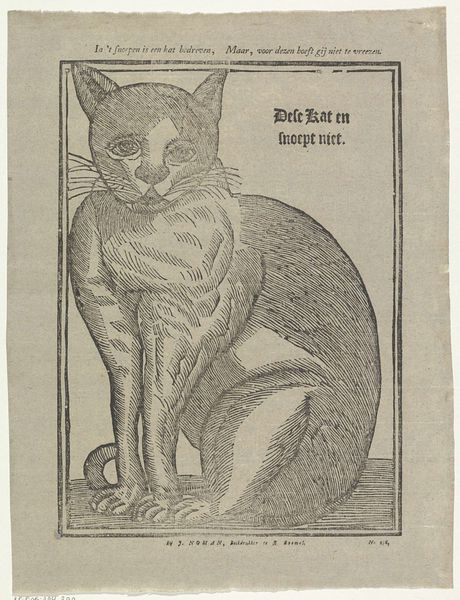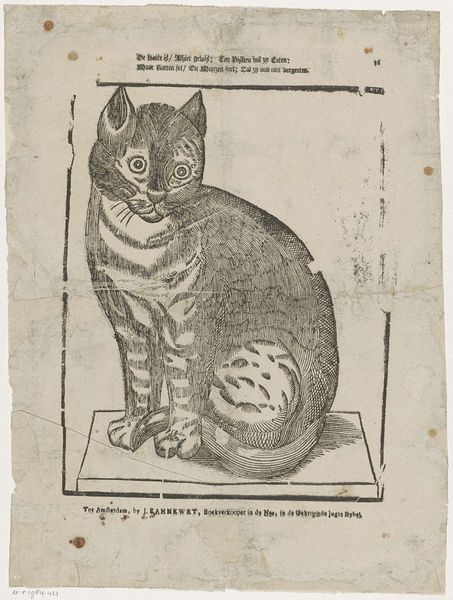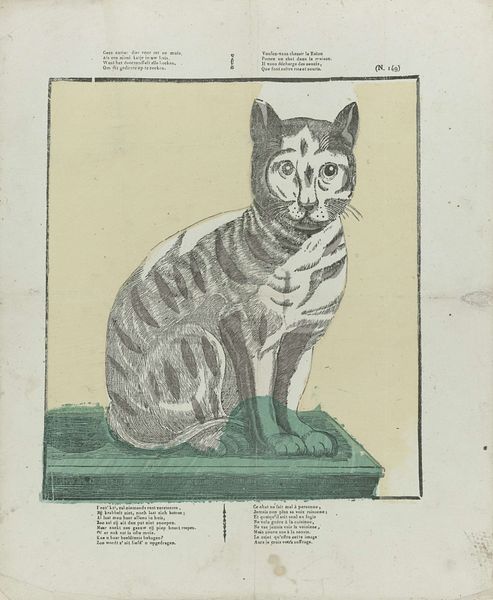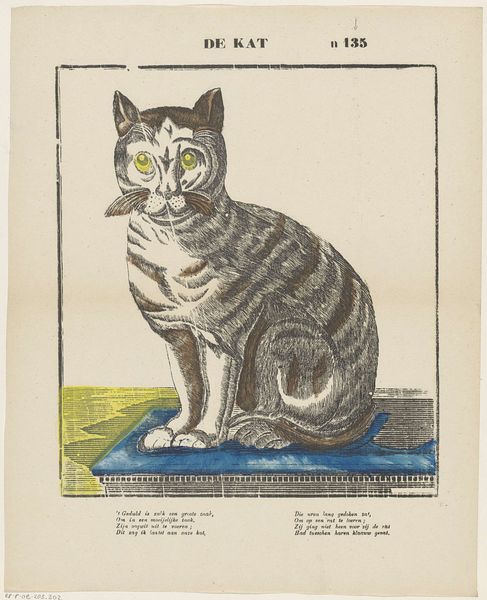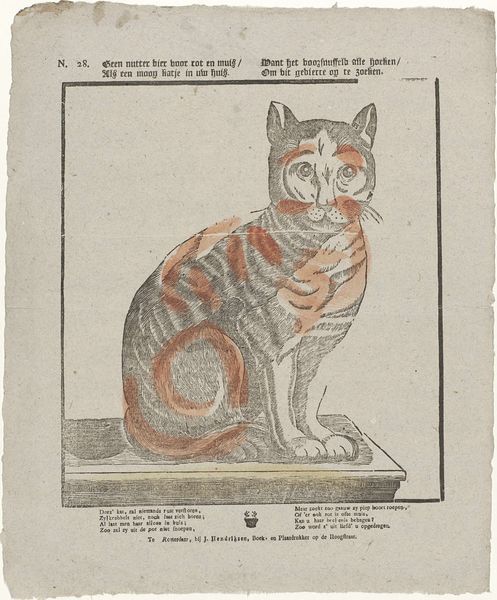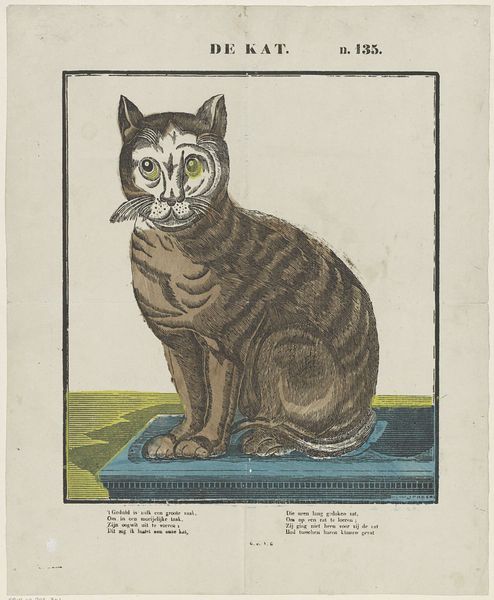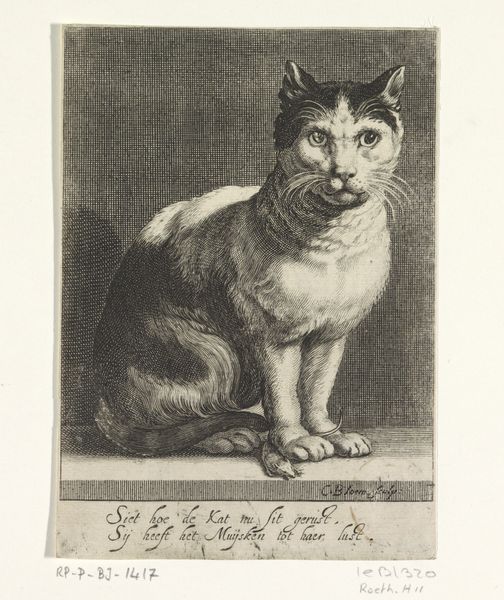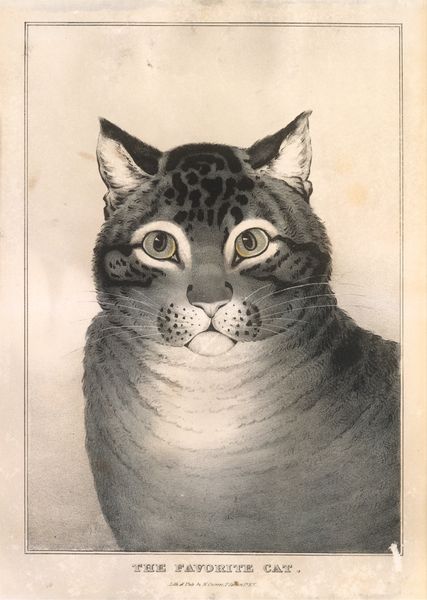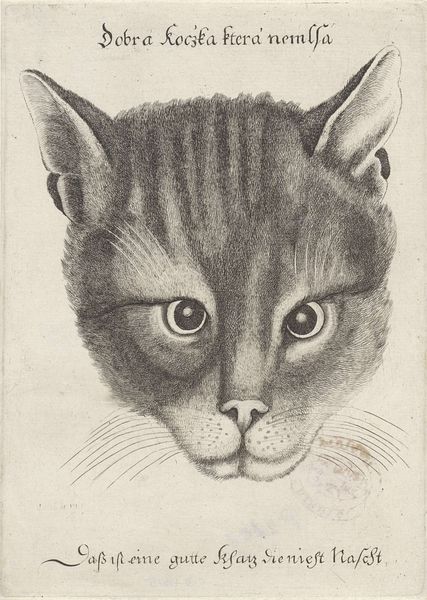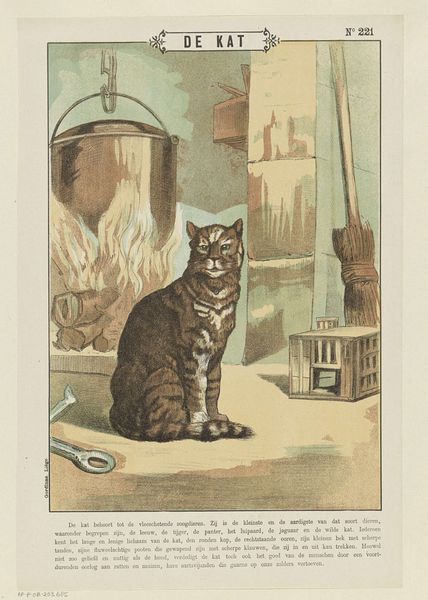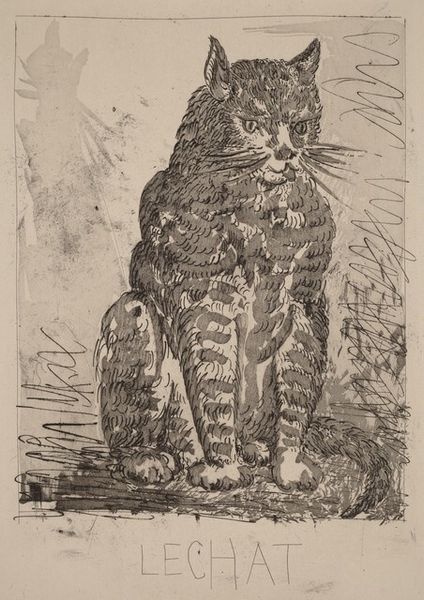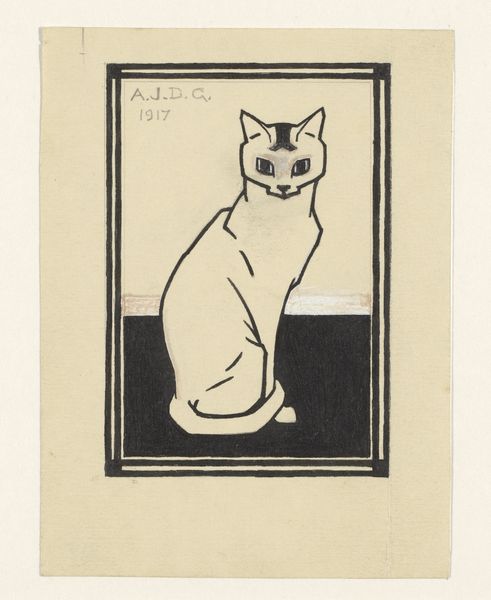
print, engraving
#
animal
#
dutch-golden-age
# print
#
old engraving style
#
figuration
#
genre-painting
#
engraving
Dimensions: height 423 mm, width 305 mm
Copyright: Rijks Museum: Open Domain
Editor: Here we have “Dese kat / en snoept niet,” a print from between 1761 and 1804, currently held at the Rijksmuseum. The etching portrays a very stoic-looking cat. What cultural narratives might be at play here? Curator: That's an insightful question. Cats, you know, they've always walked a fine line in our cultural imagination. On one hand, embodiments of domesticity and comfort. But there's always the shadow of something else: independence, cunning, even witchcraft in some older traditions. Look at the phrase inscribed on the print itself – “This cat does not feast." Why make such a pronouncement? Editor: Is the cat supposed to represent a virtue, like restraint perhaps? Curator: Exactly. The period in which this engraving was created saw the rise of the Dutch bourgeoisie and the emphasis on domestic life, so, at first glance, yes. However, I am most captivated by its duality. It suggests control, yes, but it could also imply suppressed desires or even a critique of societal excess disguised in an otherwise ordinary cat! How fascinating that such complex layers can be carried in something so apparently simple. Editor: So, by focusing on such a common animal, it allows for widespread engagement with potentially complex ideas, using the symbolism of restraint, to make broader social commentary. Curator: Precisely! Its seeming simplicity belies the depth of cultural memory it activates. Even something as seemingly innocuous as a pet can become a potent carrier of cultural anxieties and values. This "cat that does not feast" truly gives one pause for thought! Editor: I will definitely keep that in mind.
Comments
No comments
Be the first to comment and join the conversation on the ultimate creative platform.
